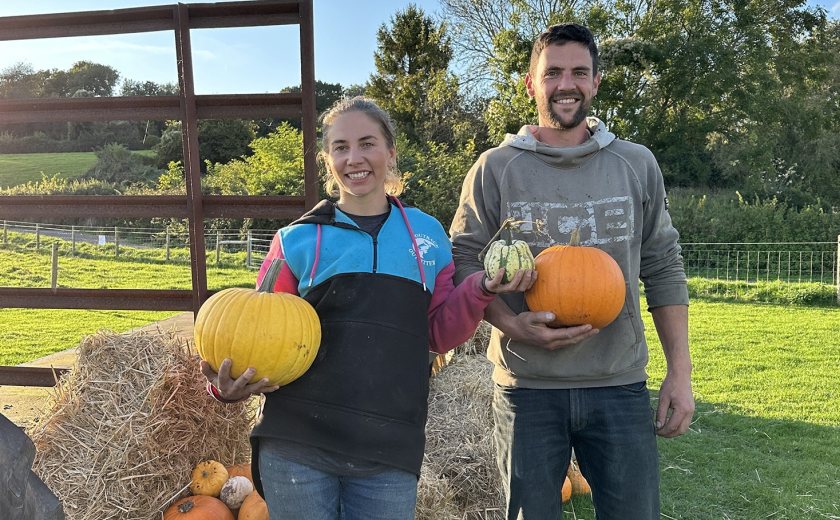
A pick-your-own (PYO) pumpkin enterprise has proven highly profitable, prompting the farming couple behind the venture to trial sunflowers as a means of extending the PYO season.
Laura Pollock and Matt Brooks run Lower House Farm, a 114-acre holding in Monmouthshire, Wales, where they rear calves and produce lambs.
Looking to diversify, the couple planted around 2,500 pumpkins in 2024, with support from Farming Connect to trial different horticultural approaches and assess the business potential.
Now in their second year of partnership with the Welsh government-funded initiative, the pair are expanding their offering by introducing sunflower production.
The new trial aims to determine whether sunflowers could become a sustainable annual attraction, offering additional revenue through cut flower sales and a longer season for public visits.
The pumpkin trial compared propagation methods, tested different varieties—including squash—and assessed the impact of value-added tourism elements such as on-site catering.
Despite challenges, including weed pressure and wet ground that led to the pre-harvest rotting of around 200 pumpkins, the couple made a profit of £17,330 from the pumpkins and associated visitor activities.
“Weeds were a significant issue, particularly thistles, which out-competed smaller plants,” said Hannah Norman, horticulture sector officer at Farming Connect.
“This made access difficult and led to harvesting the pumpkins before public entry.”
To work around this, the pumpkins were harvested early and reintroduced to the field after it had been topped—an approach that proved labour-intensive.
Over a 12-day period in October, the farm welcomed visitors via a pre-booked system, charging £9 per car. Food sales from catering added to the total income.
The pricing model—charging per car rather than per pumpkin—was designed to ease cost pressures for visitors while ensuring baseline revenue for the farm.
“Charging per car guaranteed income for Laura and Matt, and for visitors there was no pressure to buy pumpkins once they were on the farm,” added Ms Norman.
"There were plenty of free activities and photo opportunities, and the catering brought in additional revenue.”
Although establishing the pumpkins by hand was time-consuming, the trial concluded that using plug plants led to more reliable growth than seeds, particularly during dry periods.
For future seasons, the farm plans to invest in more efficient irrigation and crop establishment methods.
The couple will also plant pumpkins in variety blocks with defined paths to improve visitor experience and tractor access, and use a stale seedbed to manage weeds more effectively.
The success of the venture has cemented its place as a permanent fixture in the farm’s business model.
Looking ahead, Laura and Matt hope sunflowers will attract visitors earlier in the season and allow them to build on the growing interest in agri-tourism.
The ongoing trial will assess the financial and practical viability of the sunflower crop as another strand in the farm’s evolving diversification strategy.
